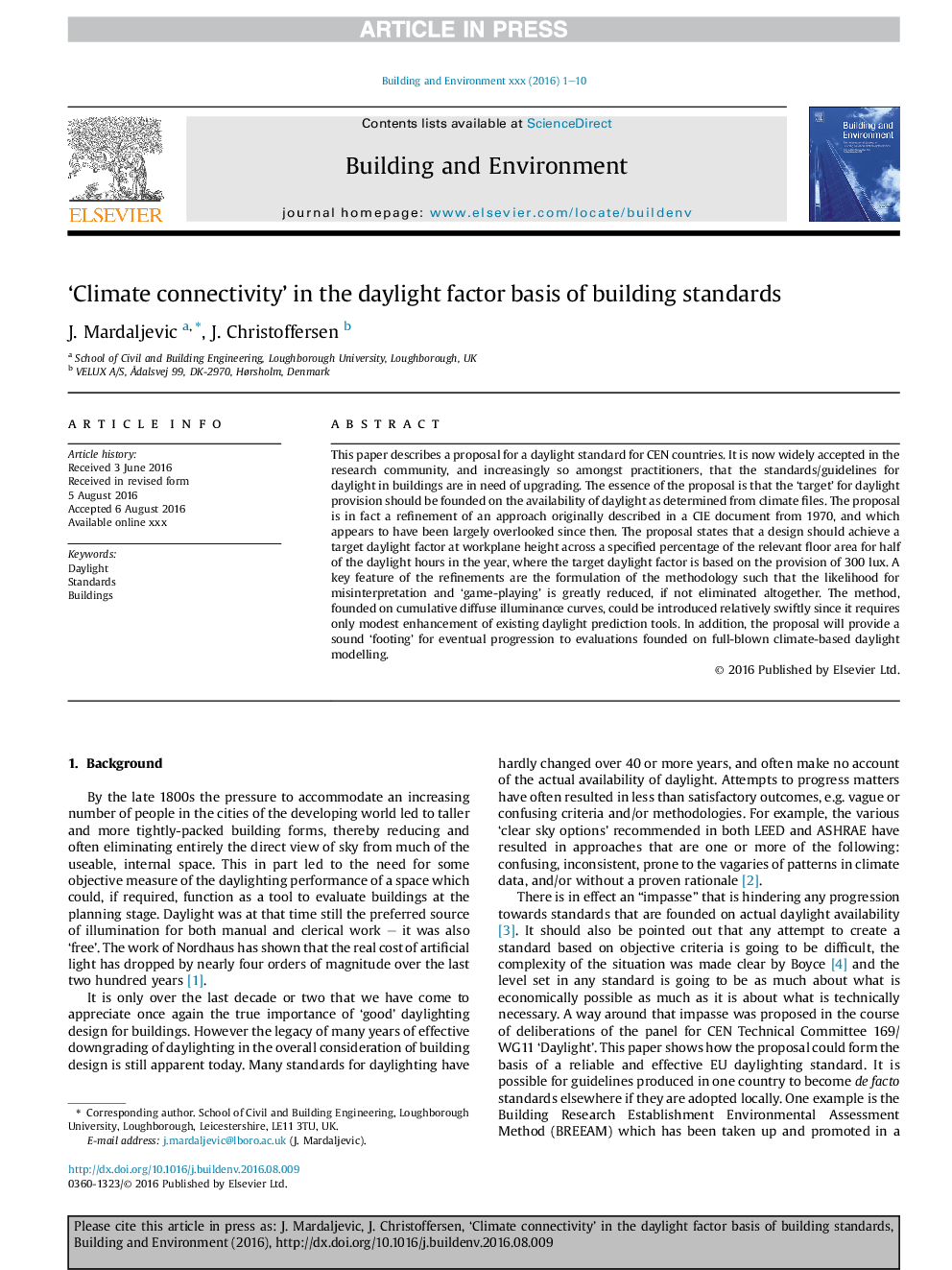| Article ID | Journal | Published Year | Pages | File Type |
|---|---|---|---|---|
| 4917361 | Building and Environment | 2017 | 10 Pages |
Abstract
This paper describes a proposal for a daylight standard for CEN countries. It is now widely accepted in the research community, and increasingly so amongst practitioners, that the standards/guidelines for daylight in buildings are in need of upgrading. The essence of the proposal is that the 'target' for daylight provision should be founded on the availability of daylight as determined from climate files. The proposal is in fact a refinement of an approach originally described in a CIE document from 1970, and which appears to have been largely overlooked since then. The proposal states that a design should achieve a target daylight factor at workplane height across a specified percentage of the relevant floor area for half of the daylight hours in the year, where the target daylight factor is based on the provision of 300 lux. A key feature of the refinements are the formulation of the methodology such that the likelihood for misinterpretation and 'game-playing' is greatly reduced, if not eliminated altogether. The method, founded on cumulative diffuse illuminance curves, could be introduced relatively swiftly since it requires only modest enhancement of existing daylight prediction tools. In addition, the proposal will provide a sound 'footing' for eventual progression to evaluations founded on full-blown climate-based daylight modelling.
Related Topics
Physical Sciences and Engineering
Energy
Renewable Energy, Sustainability and the Environment
Authors
J. Mardaljevic, J. Christoffersen,
